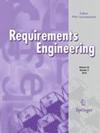生态冗余对生态系统恢复的重要性
IF 3.3
3区 计算机科学
Q3 COMPUTER SCIENCE, INFORMATION SYSTEMS
引用次数: 3
摘要
文章历史接收时间:2021年3月10日接受时间:2021月2日在线发表时间:2021 5月18日恢复生态学是一门多学科科学,它与其他科学领域交换了几个概念以改进其实践。在这篇文章中,我讨论了生态冗余的概念及其在生态恢复中的意义和应用。生态冗余是在20世纪90年代初创造的,用来描述那些在生态系统中发挥类似(等效)功能的物种。这一概念使得将物种分离为在维持系统中运作的功能组成为可能。我搜索了文献,发现尽管一些恢复模型自然地考虑了这一概念,但在正在进行恢复的地区直接测量和测试生态冗余的研究仍然很少(n=14)。我提供的证据表明,区分冗余物种和识别关键物种对于生态恢复是可行的。此外,我建议冗余也应该是恢复监控的一部分,例如,通过检查功能组是否已恢复。理论预测,如果生态冗余被正确地纳入恢复中,将创建更具成功机会的项目,因为冗余往往会提高生态系统的复原力。在不断变化的环境中,复原力是恢复可持续性的关键因素。本文章由计算机程序翻译,如有差异,请以英文原文为准。
The Importance of Ecological Redundancy for Ecosystems Restoration
Article history Received: 10 March 2021 Accepted: 2 April 2021 Published Online: 18 May 2021 Restoration ecology is a multidisciplinary science that exchanges several concepts with other scientific fields to improve its practices. In this article, I discuss the ecological redundancy concept and its implications and applications on ecological restoration. Ecological redundancy was coined in the early 1990s to characterize those species that play similar (equivalent) functions in the ecosystem. The concept made it possible to segregate species into functional groups that operate in maintaining the system. I searched the literature and found that although some restoration models naturally consider this concept, studies in areas undergoing restoration which directly measure and test the ecological redundancy are still rare (n = 14). I provide evidence that distinguishing redundant species and identifying key species is feasible for ecological restoration. Additionally, I suggest that redundancy should also be part of the restoration monitoring, for example, by checking if functional groups have been recovered. Theory predicts that if ecological redundancy is correctly incorporated in restoration, projects with more chances of success will be created because redundancy tends to increase ecosystem resilience. Resilience is a crucial factor for restoration sustainability in a changing environment.
求助全文
通过发布文献求助,成功后即可免费获取论文全文。
去求助
来源期刊

Requirements Engineering
工程技术-计算机:软件工程
CiteScore
7.10
自引率
10.70%
发文量
27
审稿时长
>12 weeks
期刊介绍:
The journal provides a focus for the dissemination of new results about the elicitation, representation and validation of requirements of software intensive information systems or applications. Theoretical and applied submissions are welcome, but all papers must explicitly address:
-the practical consequences of the ideas for the design of complex systems
-how the ideas should be evaluated by the reflective practitioner
The journal is motivated by a multi-disciplinary view that considers requirements not only in terms of software components specification but also in terms of activities for their elicitation, representation and agreement, carried out within an organisational and social context. To this end, contributions are sought from fields such as software engineering, information systems, occupational sociology, cognitive and organisational psychology, human-computer interaction, computer-supported cooperative work, linguistics and philosophy for work addressing specifically requirements engineering issues.
 求助内容:
求助内容: 应助结果提醒方式:
应助结果提醒方式:


